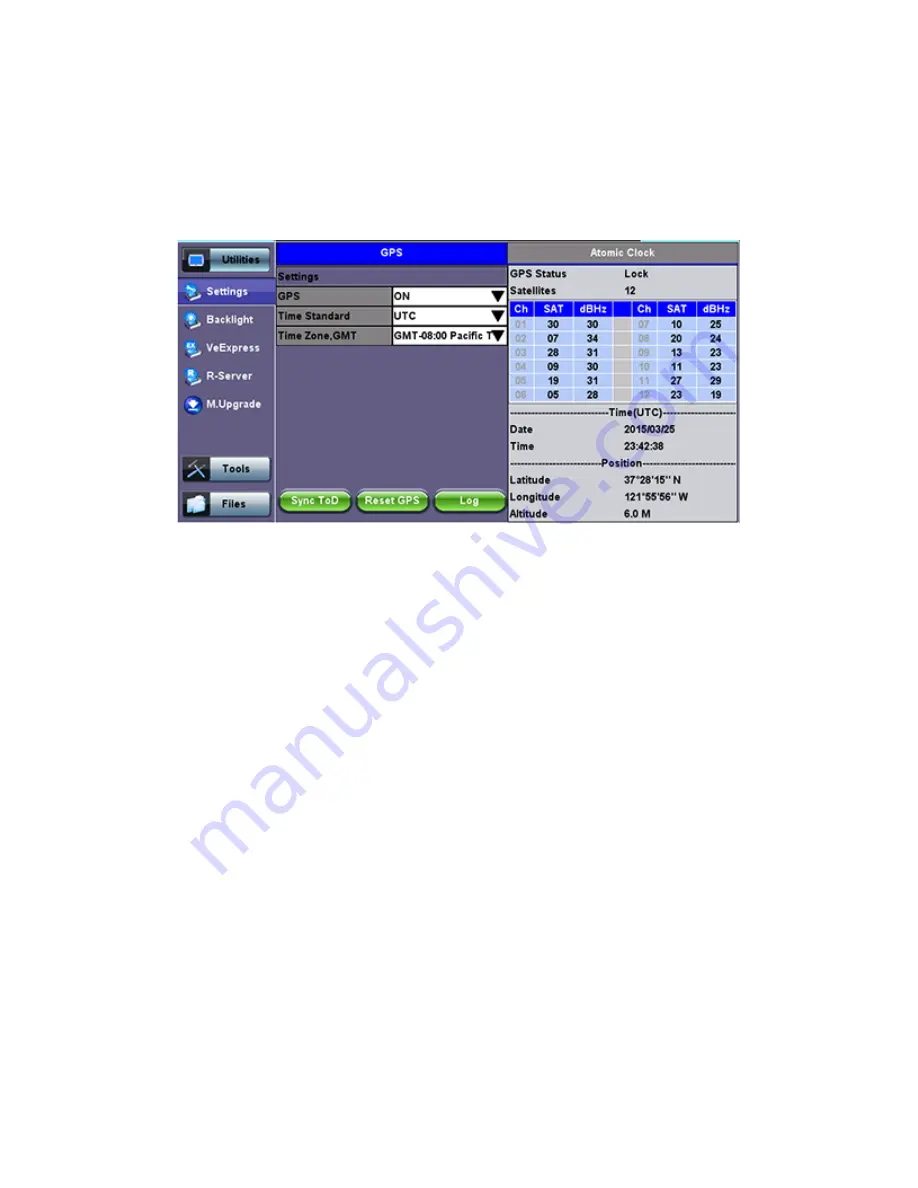
5.1.12 High Precision Clock Sources
Precision Clock References
GPS Receiver (HW Option)
The optional high-sensitivity GPS module (built-in) provides accurate Phase alignment and Coordinated Universal Time (UTC)
synchronization to the test set, in the form of internal pulse-per-second (1PPS) clock synchronized to the standard second and time
stamps. This is used to assure that two or more geographically-distributed test sets have the exact same time and can calculate
delays. One example is the One-Way-Delay (Latency) tests used to identify asymmetry between each direction of a link.
The GPS Time of Day (ToD) can also be used to precisely set the local date and time in the test set, using the Sync ToD function,
which will apply the local time zone correction before applying it to the test set system real time clock. This time stamp is used for
reports and events, but not for time-sensitive testing.
GPS ToD is also used in One-Way-Delay (OWD) measurements and time is applied directly to each test set before the test starts,
so they all have accurate time.
The GPS receiver can be turned
OFF
if not used, to save battery power.
A satellite table, showing satellites in view, satellites being used and signal to noise ratio, is provided for information only, so the
correct antenna installation can be verified. Geographical coordinates are also provided for information only and it could be used in
the future to geo-tag some position-sensitive results. The GPS antenna must have a direct view to the sky. At least four satellites
with SNR of 34 dBHz or better are recommended for accurate testing.
Atomic Clock (HW Option – Factory installed)
The optional built-in chip-scale Atomic Clock module provides a highly stable clock source to the test set, in the form of a highly
accurate and stable internal 10 MHz frequency reference. This reference can be used to drive PDH/DSn, SDH/SONET/OTN,
1588v2 PTP, or SyncE Master transmitters or be used as a reference for Frequency and Wander measurements. Its main function is
to serve as a precision reference to measure wander (clock stability), even in places where there are no reference clock signals
available that can be traced back to a Primary Reference Clock (PRC).
TX300s_Platform_Manual_RevB01
Page 44 of 123
Содержание VePAL TX320s
Страница 1: ......
Страница 71: ...WiFi Wiz Connect IP Go back to TOC TX300s_Platform_Manual_RevB01 Page 71 of 123...
Страница 73: ...ARP Wiz Result Go back to TOC TX300s_Platform_Manual_RevB01 Page 73 of 123...
Страница 82: ...Result tab Tree structure file storage TX300s_Platform_Manual_RevB01 Page 82 of 123...






























